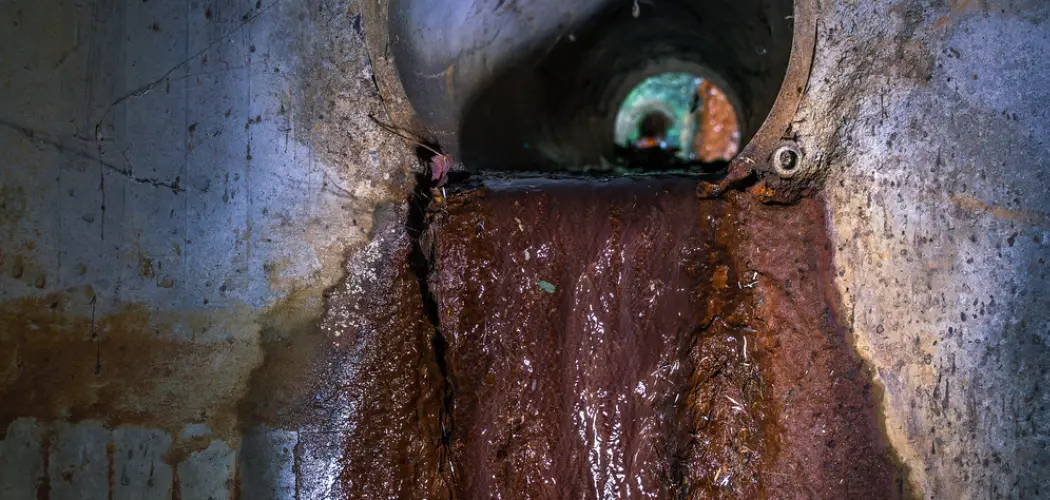Rust accumulation inside drain pipes can lead to clogs and reduced drainage efficiency, creating frustrating plumbing issues. Effectively removing rust from these pipes is crucial to maintaining a smooth-flowing drainage system. In this article, we will explore practical methods for how to remove rust from inside drain pipes. Whether you’re dealing with bathroom sink drains, kitchen drains, or any other plumbing fixtures, there are proven techniques to tackle rust stains.
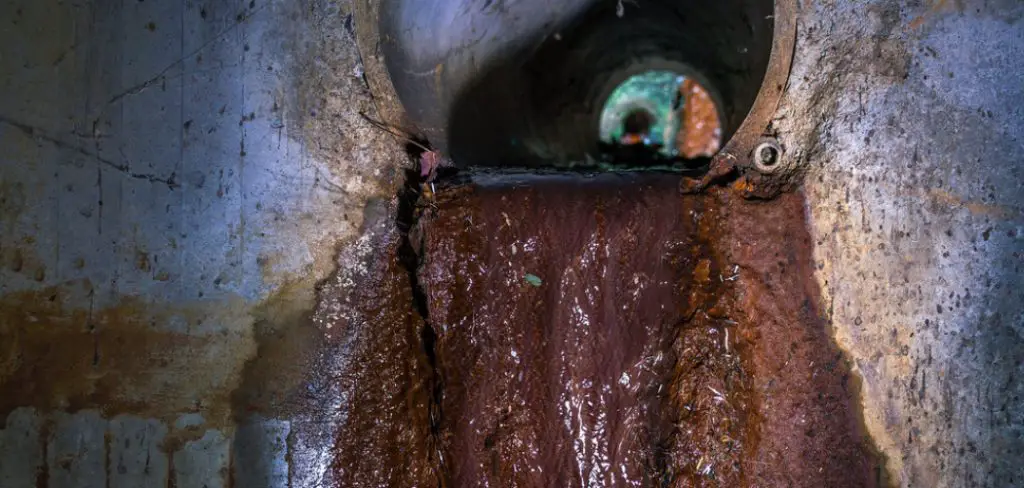
From using household items like baking soda, vinegar, and lemon to more specialized approaches involving wire brushes, we will provide comprehensive insights into the tools and methods you can employ. Understanding these strategies is essential for homeowners looking to prevent and address rust-related drain problems. By the end of this guide, you’ll have the knowledge and know-how to eliminate rust and restore your drain pipes to optimal functionality.
The Significance of Addressing Rust Inside Drain Pipes
Cleaning and maintaining the drainage system of your home or building is an essential task that cannot be overlooked. However, there may come a time when you start to notice rust inside your drain pipes. This can cause significant problems if not addressed promptly.
Rust is a reddish-brown coating that forms on iron or steel surfaces due to exposure to oxygen and moisture. In the case of drain pipes, the constant flow of water and humidity can cause rust to form on the inner walls. This can eventually lead to blockages, leaks, and even structural damage.
Consequences of Neglecting Rust Issues in Drainage Systems
Rust is a common problem in drainage systems, especially in older homes where pipes and fittings have been in place for many years. Over time, minerals and other debris can build up inside the pipes, causing corrosion and ultimately leading to the formation of rust.
While most people are aware of the aesthetic issues that rust can cause, such as discoloration of sinks and tubs, the consequences of neglecting rust issues in drainage systems can be much more severe. In this section, we will discuss some of the potential consequences of ignoring rust problems in your home’s drainage system.
Clogs and Blockages
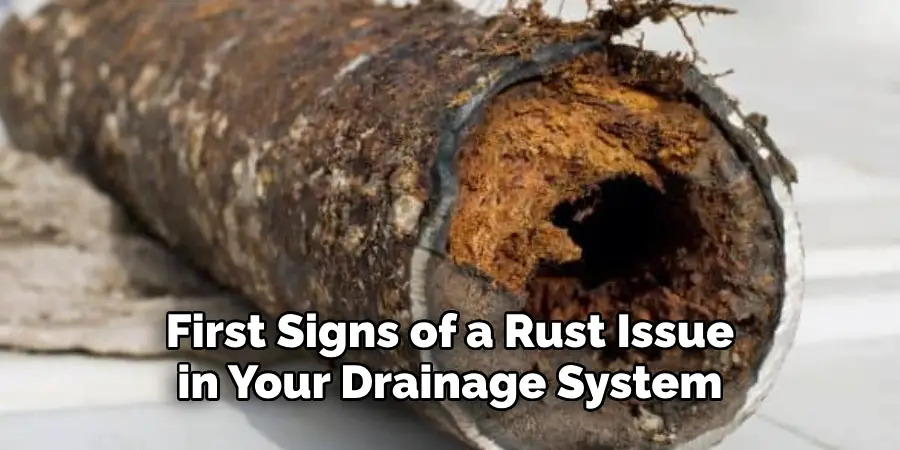
One of the first signs of a rust issue in your drainage system is clogging or blockages. As rust begins to build up inside the pipes, it can create rough surfaces and uneven interior walls. This makes it easier for debris, hair, and other materials to get caught and accumulate in the pipes, leading to clogs and blockages. These blockages can cause slow draining or complete backups of water in sinks, tubs, and toilets.
Reduced Water Flow
As rust continues to build up inside drain pipes, it can also restrict the flow of water through the system. This reduced water flow can lead to issues such as low water pressure and longer wait times for hot water. It can also strain your plumbing fixtures and appliances, causing them to work harder and potentially leading to premature damage or failure.
Leaks and Water Damage
Another consequence of neglecting rust issues in drainage systems is the potential for leaks and water damage. As rust eats away at pipes, it weakens their structural integrity, making them more prone to cracks and holes. These openings can allow water to leak out of the pipes, causing damage to walls, floors, and ceilings. In severe cases, this can even lead to structural damage if left untreated.
Health Hazards
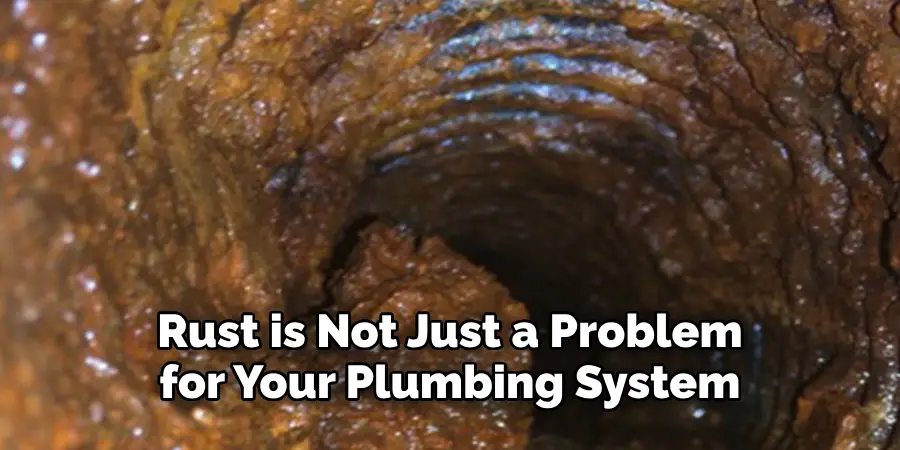
Rust is not just a problem for your plumbing system; it can also pose health hazards to you and your family. As rust particles break away from pipes, they can contaminate the water supply in your home. This can lead to potential health risks if consumed or used for cleaning or bathing. Rust can also harbor bacteria and other harmful microorganisms, which can further compromise the safety of your home’s water supply.
Expensive Repairs
Ignoring rust issues in drainage systems can lead to costly repairs down the road. If left unchecked, rust can cause significant damage to pipes, causing them to corrode and potentially even collapse.
This type of damage requires extensive repairs and, in some cases, may even require replacement of the entire drainage system. These repairs can be expensive and time-consuming, causing unnecessary stress and inconvenience for homeowners.
10 Methods How to Remove Rust from Inside Drain Pipes
1. Baking Soda and Vinegar Solution
One of the most effective ways to remove rust from inside drain pipes is by using a baking soda and vinegar solution. To create this solution, mix equal parts of baking soda and white vinegar together in a bowl.
Once you have created the mixture, pour it down the drain and let it sit for at least 30 minutes. After the allotted time has passed, flush the drain with hot water to rinse away any remaining rust particles.
2. Boiling Water
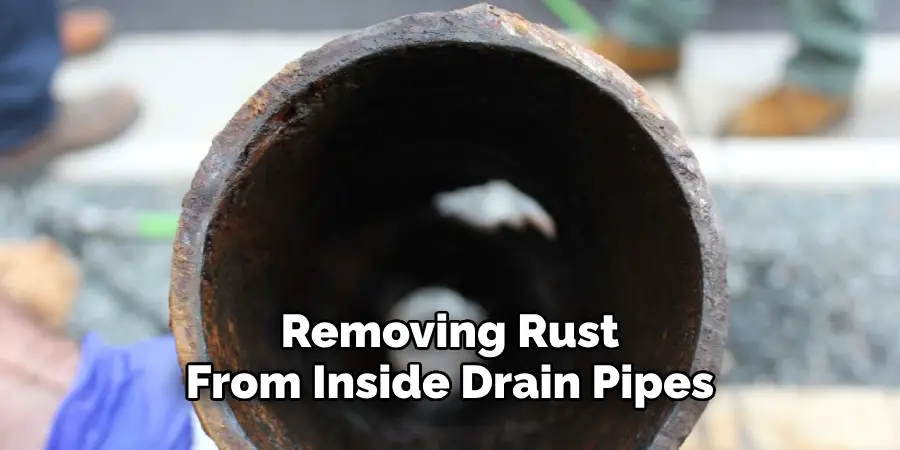
Another method for removing rust from inside drain pipes is by using boiling water. This method works best on metal pipes as the heat will help to loosen any stubborn rust build-up that may be present. To use this method, simply boil a pot of water and slowly pour it down the affected drain pipe until all of the rust particles have been removed.
3. White Distilled Vinegar
White distilled vinegar is another natural remedy for removing rust from inside drain pipes. The acidic nature of vinegar helps to break down any rust that may be present in the pipe, making it easier to remove with a brush or other cleaning tool. To use this method, simply pour white distilled vinegar down the affected pipe and let it sit for at least an hour before flushing with hot water.
4. Lemon Juice
Lemon juice is another natural remedy for removing rust from inside drain pipes that can be used in place of white distilled vinegar if needed. As with white distilled vinegar, lemon juice helps to break down any rust that may be present in the pipe, making it easier to remove with a brush or other cleaning tool. To use this method, simply pour lemon juice down the affected pipe and let it sit for at least an hour before flushing with hot water.
5. Salt and Lime Juice
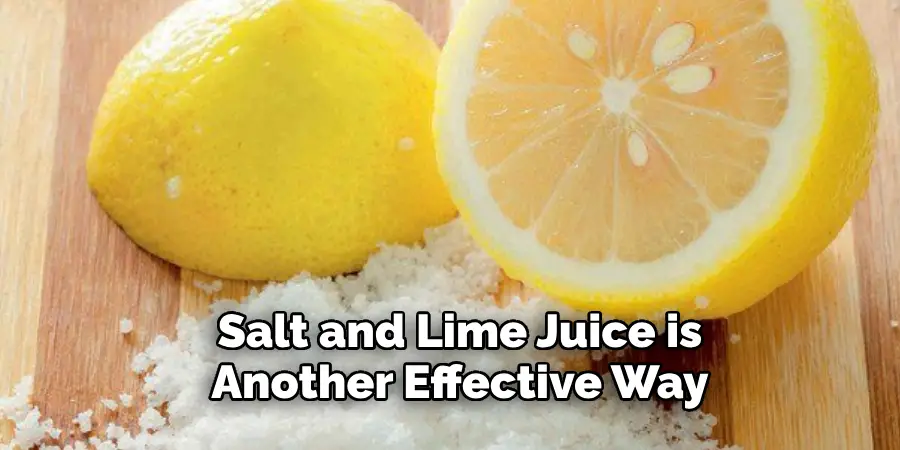
Salt and lime juice is another effective way to remove rust from inside drain pipes without having to use harsh chemicals or abrasive tools like brushes or scrapers. To use this method, mix equal parts salt and lime juice together in a bowl before pouring it down the affected pipe and letting it sit for at least an hour before flushing with hot water.
The acidity of both ingredients helps to break down any stubborn rust build-up that may be present in the pipe, making it easier to remove without damaging your plumbing system further.
6. Steel Wool
Steel wool is another common household item that can be used when attempting to remove rust from inside drain pipes as long as you are careful not to damage your plumbing system further during the removal process. To use steel wool on your rusty pipes, start by soaking them in warm, soapy water for several minutes before scrubbing them gently with steel wool pads.
Make sure not to scrub too hard, as you don’t want to scratch or damage your pipes further during the removal process. Once all visible traces of rust have been removed, flush out your pipes thoroughly with hot water.
7. Borax Powder
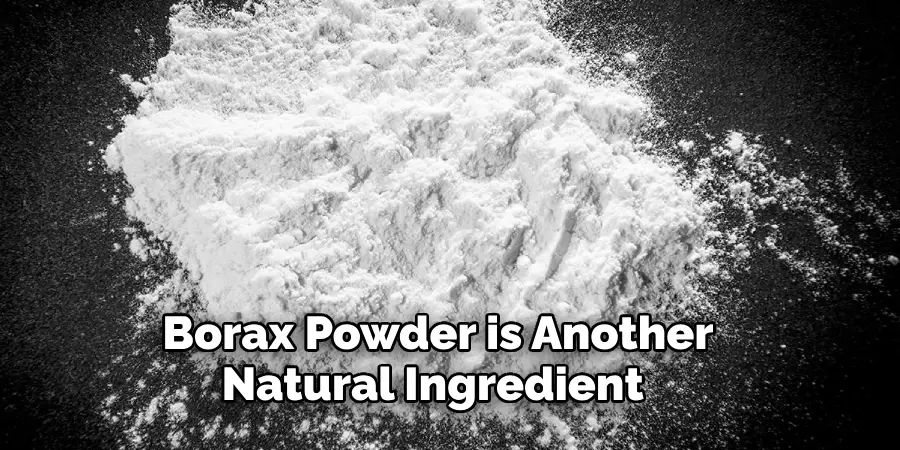
Borax powder is another natural ingredient that can be used when attempting to remove stubborn rust build-up from inside your drains. This powder contains boric acid, which helps break down the bonds between iron molecules, allowing you to easily scrub away any remaining residue.
To use borax powder on your rusty pipes, start by mixing one cup of borax powder into two cups of warm water before pouring directly onto the affected area. Let the mixture sit overnight, then scrub gently with steel wool pads until all visible traces of rust have been removed before rinsing thoroughly with hot water.
8. Wire Brush
A wire brush is another tool commonly used when attempting to remove tough layers of rust from inside drains. Start by soaking the affected area in warm, soapy water for several minutes, carefully brushing away any remaining residue using a wire brush attachment on a drill or other power tools (if available), and be careful not to scratch or damage the surface during the process. Once all visible traces of rust have been removed, flush out your pipes thoroughly with hot water afterward.
9. Dry Ice Blasting
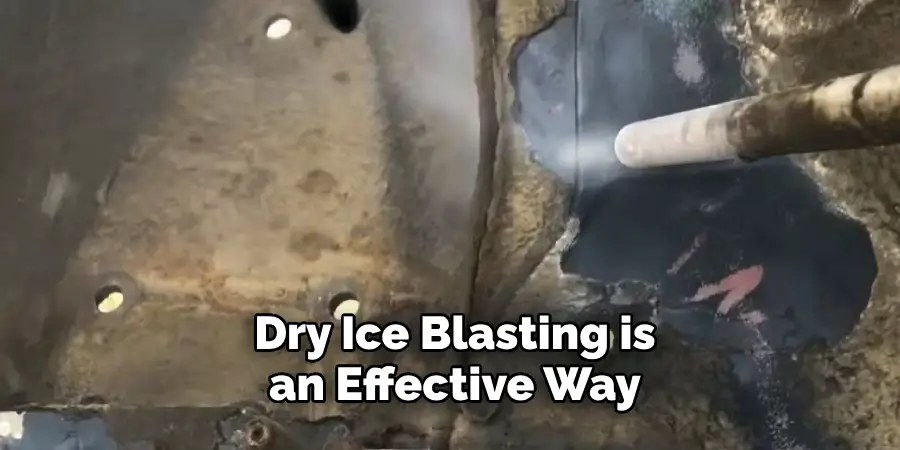
Dry ice blasting is an effective way to blast away tough layers of rust buildup without damaging underlying surfaces like plastic or metal piping systems found inside many homes today.
This process involves blasting dry ice pellets (frozen carbon dioxide)at high speeds onto affected areas, which effectively breaks up bonds between iron molecules, allowing you to easily scrub away remaining residue afterward using a wire brush attachment or drill (if available).
10 Chemical Rust Removers
Finally, chemical rust removers are also available if none of the other methods above seem to work well enough for the particular situation at hand but should only be used after consulting a professional plumber first, as they can cause damage to your pipes if used incorrectly.
If you do decide to use these types of cleaners, follow the instructions carefully and always wear protective gear like gloves and masks when handling them to avoid potential harm from exposure.
Remember that prevention is key when it comes to rust build-up inside drain pipes, so make sure to regularly clean and maintain your plumbing system to avoid future problems. Additionally, consider using a rust inhibitor to prevent further rust build-up in the future.
Things to Consider When Removing Rust from inside Drain Pipes
When it comes to removing rust from inside drain pipes, there are a few things that you should keep in mind. This will ensure that the process is done effectively and safely. Here are some important considerations to take into account:
- Safety first: Before attempting to remove rust from inside drain pipes, make sure to wear proper protective gear. This includes gloves, goggles, and a mask to avoid inhaling any harmful chemicals.
- Type of rust removal product: There are various products available in the market that claim to effectively remove rust from pipes. However, not all of them may be suitable for your specific type of pipe material. It’s important to research and choose a product that is compatible with the material of your drain pipes.
- Drain cleaning tools: In addition to using a rust removal product, it’s also important to have the right tools for cleaning the inside of drain pipes. This includes a pipe snake or brush that can help remove any built-up debris and rust particles.
- Proper ventilation: It’s important to have proper ventilation while working with rust removal products as they can emit strong fumes. Make sure to open windows or doors and use fans to circulate fresh air.
- Time and patience: Removing rust from inside drain pipes is not a quick process, especially if the rust buildup is severe. It may take several applications of the chosen product and some scrubbing to completely remove all traces of rust.
Conclusion
Armed with the knowledge on how to remove rust from inside drain pipes effectively, it is now up to you to take action into getting rid of these pesky particles. It is important to remain mindful when attempting this task as you don’t want to worsen the existing conditions or cause any further damage. By following the necessary steps shared in this article, you can easily eliminate and prevent further buildup of rust.
With that being said, remember that prevention is always better than cure; inspect your pipes regularly so rust won’t have the chance to accumulate and progress into a more complex situation that may require costly repairs or replacements. So what are you waiting for? Apply what you learned from this article today and start cleaning those rusty pipes right away!

